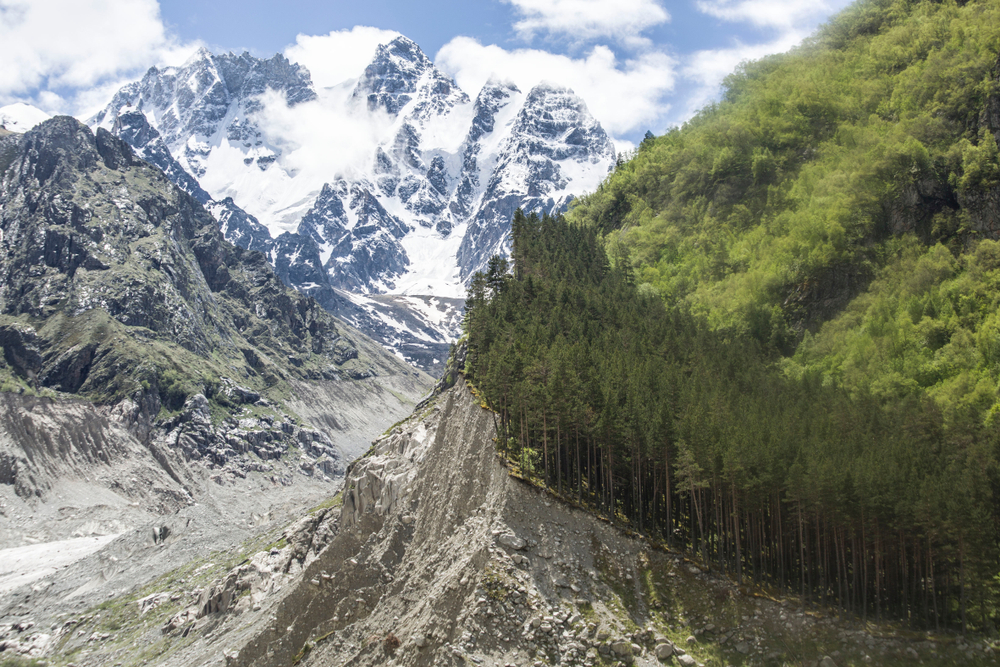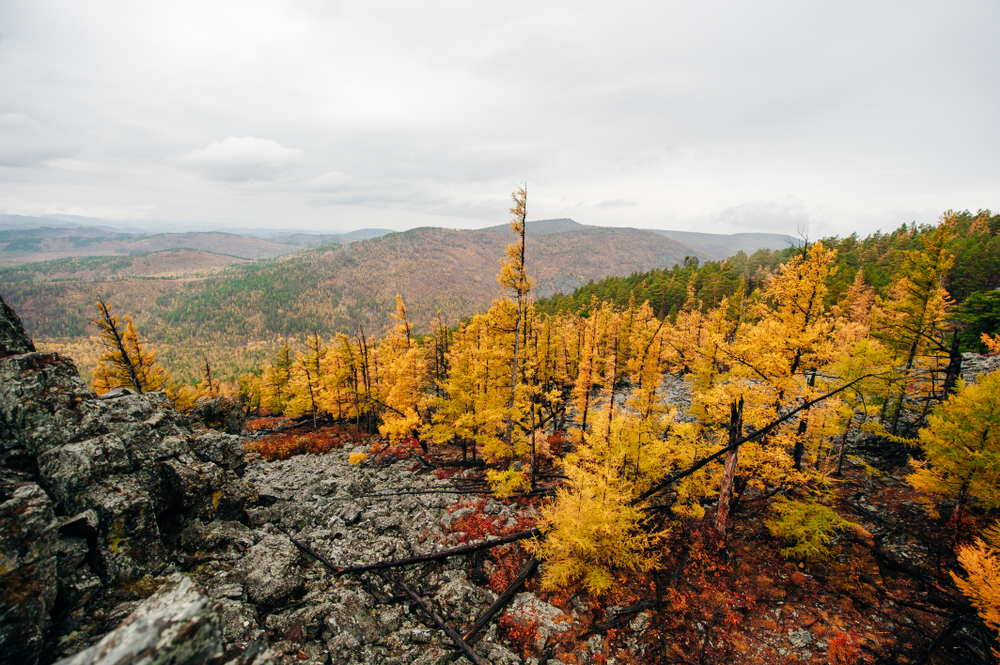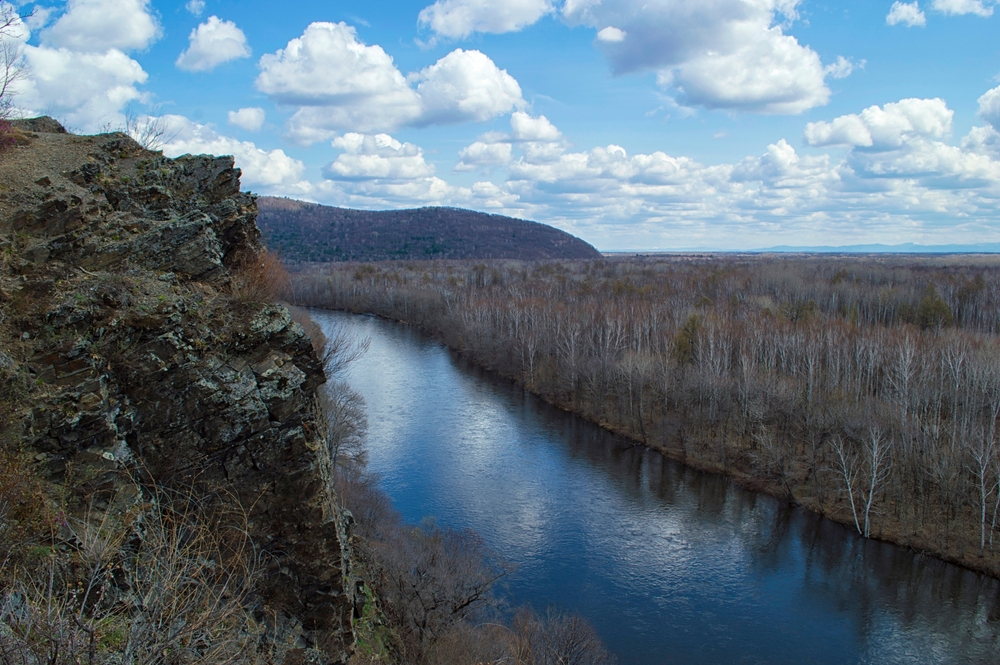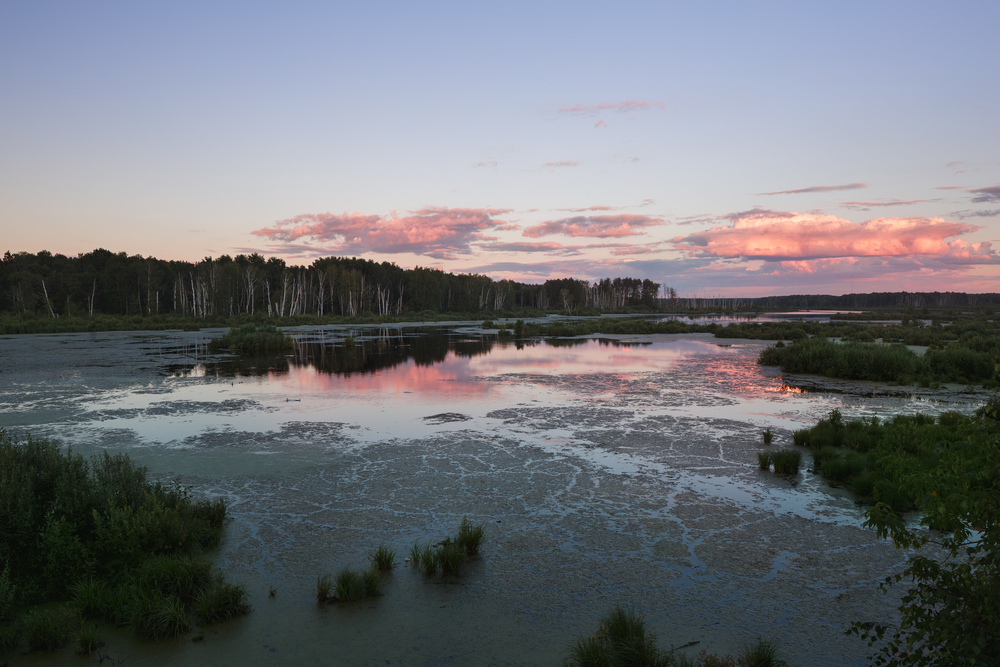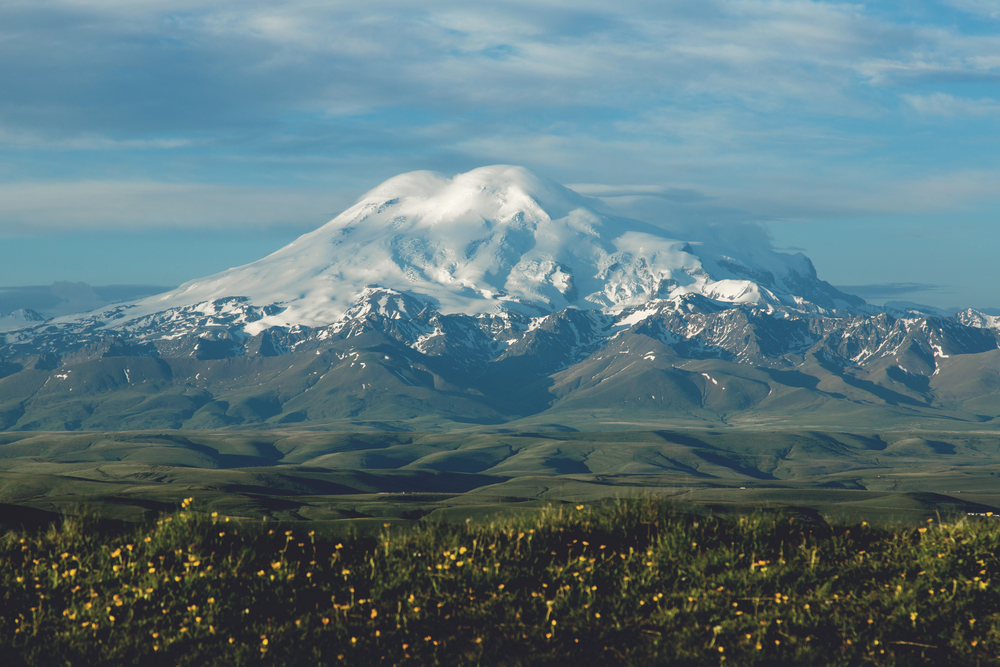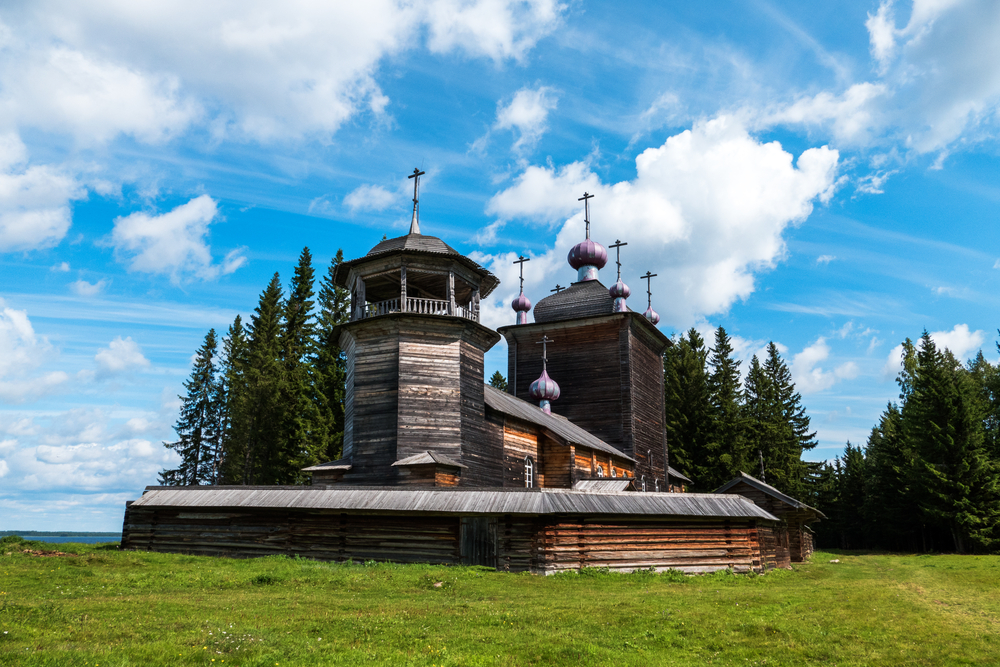Bashkiriya Overview
Bashkiriya National Park, located in the Republic of Bashkortostan, Russia, spans approximately 319 square miles (826 square kilometers) and is a protected area known for its rich biodiversity and striking landscapes.
Situated within the Ural Mountains, the park features a diverse terrain that includes rugged limestone ridges, vast karst formations, dense taiga forests, and lush river valleys. The most notable rivers flowing through the park are the Belaya, Nugush, and Zilim, which carve deep gorges and create picturesque scenery.
The Nugush Reservoir is one of the most striking water features, offering stunning reflective waters amid forested cliffs. The park’s landscape is also marked by caves, sinkholes, and rock formations, making it a haven for geology enthusiasts.
The vegetation in Bashkiriya National Park is a mixture of southern taiga and deciduous forests, creating a mosaic of biodiversity. Pine, spruce, birch, and oak dominate the woodlands, while meadows burst with wildflowers during the warmer months.
The forests provide essential habitats for an array of wildlife, including large mammals such as brown bears, lynxes, and wolves. The elusive European mink, a species under threat, also finds refuge within the park.
Roe deer and wild boar roam the dense forests, while the soaring cliffs and open meadows attract numerous bird species, including golden eagles, black storks, and peregrine falcons. The rivers and wetlands support beavers and numerous amphibian species, contributing to the park’s ecological richness.
One of the most popular features of Bashkiriya National Park is the Nugush Reservoir, which draws visitors for boating, swimming, and fishing. The Zilim River, known for its clear waters and scenic surroundings, is a favorite for kayaking and rafting.
The park is also home to numerous caves, including the famous Sumgan Cave, one of the deepest in the region, attracting speleologists and adventure seekers. Hiking trails meander through the park’s forests and mountains, providing breathtaking views and encounters with wildlife. In winter, cross-country skiing and snowshoeing are popular among those who wish to experience the serene, snow-covered landscapes.
Visitors can engage with the park in multiple ways, including guided eco-tours, birdwatching excursions, and camping in designated areas. The park offers a blend of adventure and relaxation, with nature trails suitable for all experience levels.
The rivers provide excellent conditions for water sports, while designated viewpoints allow travelers to take in panoramic vistas of the Ural landscapes. Photography enthusiasts find ample inspiration in the region’s dramatic rock formations, misty river valleys, and diverse flora and fauna.
Conservation efforts in Bashkiriya National Park focus on protecting its fragile ecosystems from deforestation, poaching, and unsustainable tourism. Authorities have implemented measures to monitor and conserve endangered species, with particular attention given to the preservation of the European mink.
Sustainable tourism initiatives aim to balance visitor activities with environmental protection, ensuring that the park’s natural beauty remains intact for future generations. Challenges include combating illegal logging and preserving the pristine nature of the park’s water systems, but ongoing efforts by conservationists and local authorities have seen successes in maintaining biodiversity and promoting eco-friendly practices.











































































